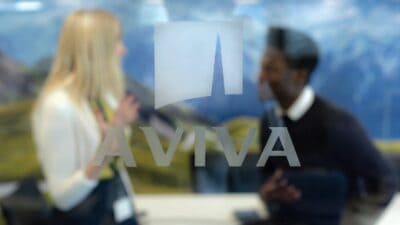Some dividends have staying power. Companies delivering enduring dividends tend to back such often-rising payouts with robust business and financial achievement.
Fragile dividends, meanwhile, arise because of weaker operational and financial characteristics. Those are the dividends to avoid. However, fragile dividends often tempt us because of high dividend yields.
How to tell the difference
Under the spotlight today, two FTSE 100 firms: Barclays (LSE: BARC) and Aviva (LSE: AV).
These firms operate in different narrow sectors, but both have a high dividend yield. At the recent share price of 180p, Barclays’ forward yield for 2016 is around 4.6%. At 496p, Aviva’s is just over 5%.
Let’s run some tests to gauge business and financial quality, and score performance in each test out of a maximum five.
-
Dividend record
Both firms have kept up dividend payments.
|
Ordinary dividends |
2011 |
2012 |
2013 |
2014 |
2015 |
|
Barclays (pence) |
6 |
6.5 |
6.5 |
6.5 |
6.5(e) |
|
Aviva (pence) |
26 |
19 |
15 |
18.1 |
21(e) |
Over four years, Barclays’ dividend has advanced a modest 8% or so, remaining flat most years. Meanwhile, I estimate Aviva’s dividend will come in around 19% down over the period, but it went lower still in 2013.
For their dividend records, I’m scoring Barclays 2/5 and Aviva 1/5.
-
Dividend cover
Barclays expects its 2016 adjusted earnings to cover its dividend around three times. Aviva expects earnings to cover the payout twice over.
My ‘ideal’ dividend payer would cover its cash distribution with earnings at least twice.
However, cash pays dividends, so it’s worth digging deeper into how well, or poorly, both companies cover their dividend payouts with free cash flow.
On dividend cover from earnings though, I’m awarding both Barclays and Aviva 4/5.
-
Cash flow
Dividend cover from earnings means little if cash flow doesn’t support profits.
Here are the firms’ recent records on operational cash flow compared to profits:
|
Barclays |
2010 |
2011 |
2012 |
2013 |
2014 |
|
Operating profit (£m) |
6,007 |
5,710 |
657 |
2,844 |
1,821 |
|
Net cash from operations (£m) |
18,686 |
29,079 |
(13,823) |
(24,942) |
(10,441) |
|
Aviva |
|
|
|
|
|
|
Operating profit (£m) |
2,497 |
1,272 |
1,304 |
1,846 |
2,882 |
|
Net cash from operations (£m) |
1,807 |
(342) |
2,499 |
4,018 |
(544) |
Both show periods of negative cash flow from operations where the cash generated from core activities doesn’t cover profits. When that happens, firms must make up the shortfall from other financial activities such as investing, or fund raising.
Banks and insurance firms both fall into the wider sector of financials, and reliance on activities other than straightforward banking and insuring is a big part of what makes them so cyclical — prone to harsh volatility that often exaggerates macroeconomic cycles and financial market undulations.
I’m playing safe and scoring Barclays and Aviva just 1/5 for their records on cash flow from operations.
-
Debt
Interest payments on borrowed money compete with dividend payments for incoming cash flow. That’s why big debts are undesirable in dividend-led investments.
Most banks carry big external debts and Barclays’ borrowings run around 12 times its 2014 operating profit, although earnings rebounded during 2015. And that’s not Barclays’ only exposure to other people’s money. Meanwhile, Aviva’s borrowings sit at about three times operating profit.
Banking businesses require, and can justify, high debt-loads. However, they would make more secure investments with lower levels of borrowed money. Indeed, the need for high exposure to debt in order to turn a profit is a key reason banks have problems when economies tank, in my view.
I’m giving Barclays 0/5 and Aviva 3/5 for their approach to borrowings.
-
Degree of cyclicality
Recent weakness in the share prices of London-listed banks, after lengthy stagnation, teaches me not to become complacent about the cyclicality in the wider financial sector.
Cyclical firms make poor choices for a dividend-led investing strategy and Barclays and Aviva both operate with hair-trigger cyclical characteristics.
I’m scoring both Barclays and Aviva 1/5 for their cyclicality.
Putting it all together
Here are the final scores:
|
|
Barclays |
Aviva |
|
Dividend record |
2 |
1 |
|
Dividend cover |
4 |
4 |
|
Cash flow |
1 |
1 |
|
Debt |
0 |
3 |
|
Degree of cyclicality |
1 |
1 |
|
Total score out of 25 |
8 |
10 |
Aviva just scrapes ahead but both are low-scoring firms. Cyclical firms such as Barclays and Aviva are two steer-clear shares for my long-term dividend strategy. My search for a dividend champion continues.







